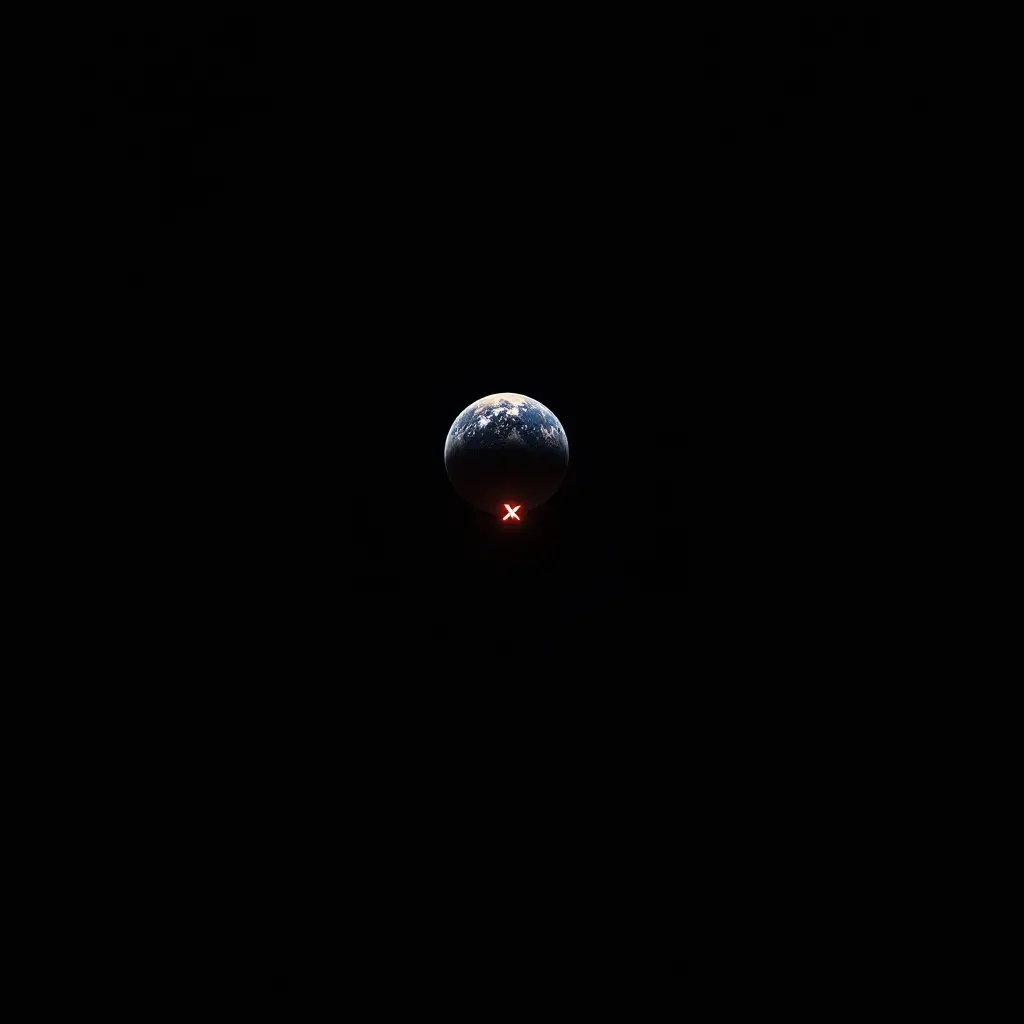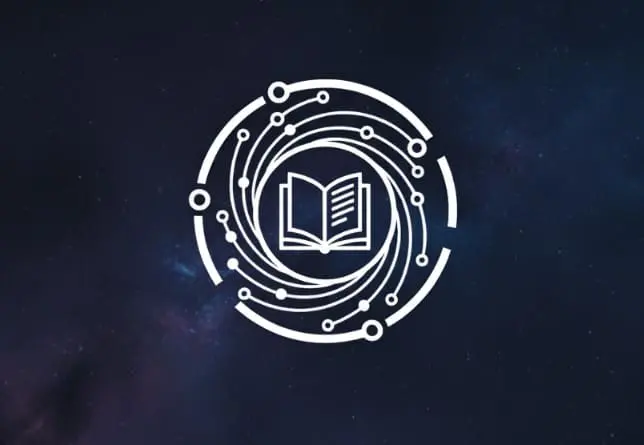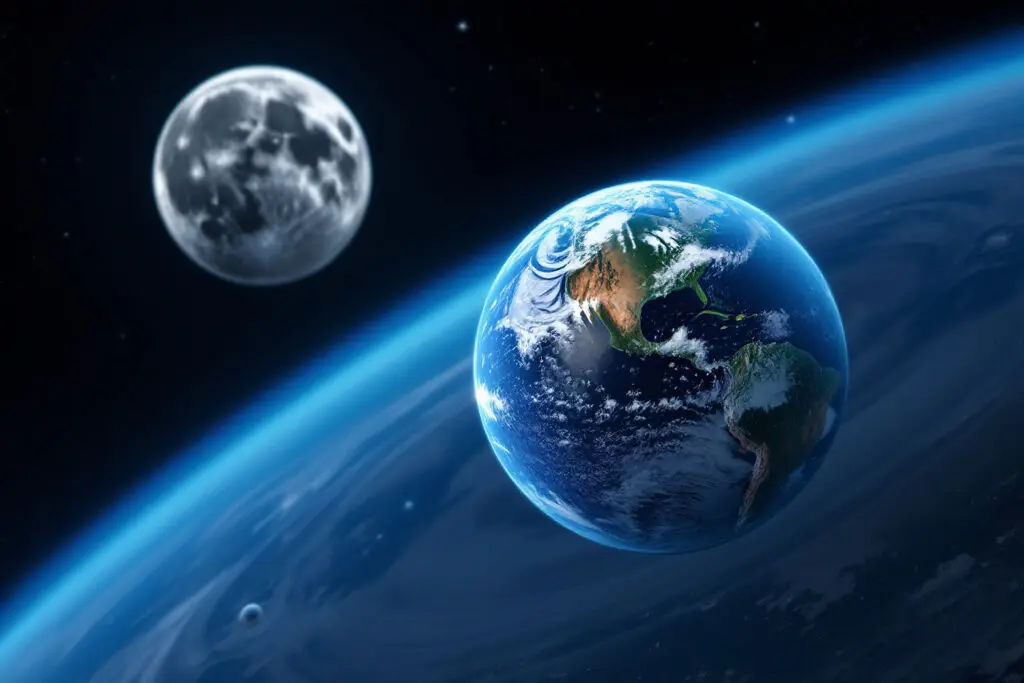Growing up, you were probably told a simple story: the Moon orbits the Earth. It paints a clean picture, right? A big blue-and-white marble with a smaller gray one circling it forever. And for the most part, that picture works. But reality, as it often does, is a little messier and a whole lot more interesting. The Earth and Moon are locked in a cosmic dance, and they aren’t dancing around the center of the Earth. Not even close. Instead, they both revolve around a shared, invisible point in space. This is the barycenter of Earth and Moon, the real center of our local system.
Getting to know this concept does more than arm you with a cool piece of trivia; it completely reframes how you see our planet and its closest celestial partner. This is the pivot point that dictates our tides, gives our planet a subtle wobble, and governs the very rhythm of our cosmic neighborhood.
More in Celestial Mechanics Category
How Celestial Mechanics Predict Orbits
Why Don’t Planets Fall Into the Sun
Trajectory of Comets and Asteroids
Key Takeaways
- The Moon doesn’t orbit the geometric center of the Earth. Instead, both the Earth and the Moon orbit a common center of mass, which we call the barycenter.
- Because the Earth is so much more massive than the Moon, this shared balance point is located inside our planet, about 1,700 kilometers (roughly 1,060 miles) below the surface.
- This means the Earth isn’t stationary. It actually performs its own small “wobble,” or mini-orbit, around this internal point every month as the Moon makes its journey.
- The barycenter isn’t just an Earth-Moon thing. The concept is crucial for understanding all gravitational interactions, from binary stars to the fascinating dance between Pluto and its moon Charon.
- This gravitational balancing act is a key ingredient in creating ocean tides and is vital for the pinpoint calculations needed to send spacecraft across the solar system.
What Exactly Is a Barycenter Anyway?
Let’s get right to it. The word “barycenter” sounds a bit intimidating, but the idea behind it is something you already understand intuitively. Picture a seesaw at the playground. If two kids with the exact same weight sit on either end, the balance point—the fulcrum—is smack dab in the middle. Simple.
But what happens when a big adult sits on one side and a small child on the other?
To keep the seesaw from slamming to the ground, the adult has to scooch way closer to the middle, letting the child sit far out on their end. That new balance point is their shared center of mass. In a nutshell, that’s a barycenter. It’s the gravitational balancing point for two or more objects flying through space. Every object pulls on every other object, and the barycenter is the spot where all those gravitational tugs cancel each other out. It’s the real center that everything in a system orbits.
So, It’s Not Always Inside the Bigger Object?
Exactly. And that’s the big reveal here. We often say a moon orbits a planet or a planet orbits a star, but that’s just a convenient simplification. The truth is, both objects are orbiting their shared barycenter. If you had two stars of the exact same mass, for example, their barycenter would be a point in empty space right between them. They’d chase each other in a perfect circle around nothing.
But when one object is a giant compared to the other—like our Sun and Jupiter—the barycenter is still between them, but it’s squished incredibly close to the bigger object. In the case of the Sun and Jupiter, their barycenter is actually just outside the surface of the Sun. That’s right, even the colossal star at the center of our solar system gets pulled around and wobbles a bit, thanks to the gravitational tug of its planets.
It’s a universal rule of gravity. Every system has one.
Where Is the Barycenter of Earth and Moon Located?
This is where it gets personal. Thinking back to our seesaw, you know the Earth is about 81 times more massive than the Moon. So you’d expect their balance point to be much, much closer to us. But you might not realize just how close it is.
It’s not floating in the void between here and the Moon.
On average, the barycenter of the Earth and Moon is about 4,670 kilometers (2,902 miles) from the Earth’s core. Now, hold on. The radius of our planet is about 6,371 kilometers (3,959 miles). Do the math, and you realize something astounding. The balance point of the entire Earth-Moon system isn’t in space at all.
It’s inside the Earth.
That’s right. The specific spot that you, me, the Moon, and the entire planet are all orbiting is located roughly 1,700 kilometers (1,060 miles) beneath our feet, deep inside the Earth’s fiery mantle.
Does That Mean the Earth Wobbles?
You bet it does. This is the wildest part of the whole story. Because the center of the Earth and the Earth-Moon barycenter are two different points, the Earth has no choice but to move. As the Moon completes its 27.3-day orbit around that internal barycenter, the solid body of the Earth does the exact same thing.
Think about swinging a heavy hammer around in a circle. You don’t just stand still. Your whole body has to lean back and shift around to counterbalance the weight of the hammerhead you’re swinging. The Earth is doing that right now. It’s performing a tiny, constant, monthly orbit—a wobble—around a point buried deep within itself.
It’s not a violent shake you can feel, of course. It’s a perfectly smooth and predictable motion. But from a cosmic perspective, the Earth’s path around the Sun isn’t a clean, simple line. It’s a gently weaving, scalloped path, as the Earth and Moon snake around their common center of gravity while the entire system hurtles through space.
How Was This Balancing Point Even Discovered?
The basic idea of a center of mass isn’t new; it goes all the way back to ancient Greek thinkers like Archimedes. But it was Sir Isaac Newton who really put it on the cosmic map. In 1687, his Law of Universal Gravitation changed everything. Newton showed that gravity wasn’t a one-way street. The Earth pulls on the Moon, sure, but the Moon also pulls right back on the Earth.
Because they pull on each other, it was impossible for one to be the fixed center of the other’s orbit. Newton’s math predicted that any two bodies would orbit a common center of mass. He gave us the blueprint, but to actually find the Earth-Moon barycenter, astronomers needed some hard numbers:
- The mass of the Earth: Scientists got a pretty good handle on this back in the 18th century by cleverly measuring the planet’s density.
- The mass of the Moon: This was tougher. Its mass had to be figured out indirectly by measuring its gravitational effects, like the precise way it makes the Earth wobble.
- The distance between them: This has been measured for centuries, starting with old-school geometry and now reaching incredible precision with modern lasers bounced off reflectors left on the Moon by Apollo astronauts.
Once they had those three key pieces of data, they could plug them into Newton’s equations and pinpoint the location. Every new, more accurate measurement since has just confirmed what the math told us: the balance point is deep inside our world.
Can the Barycenter’s Location Change?
It can, and it does, though not by much. The Moon’s path around us isn’t a perfect circle. It’s an ellipse. That means its distance from Earth changes. Sometimes it’s closer (a point called perigee), and sometimes it’s farther away (apogee).
When the Moon swings in closer at perigee, its gravitational pull gets a bit stronger, which tugs the barycenter a little closer to the Earth’s surface. Then, as it moves away toward apogee, its pull weakens, and the barycenter sinks deeper into the planet. It’s a small but constant, rhythmic shift that happens month after month. On top of that, the Moon is slowly drifting away from us at about 3.8 centimeters (1.5 inches) a year. As it gets farther away over millions of years, the barycenter will also creep steadily outward. In the very, very distant future, it might finally escape the Earth entirely.
Why Is the Barycenter So Important?
So, our planet has an off-center balance point and wobbles a little. It’s a great fun fact, but does it actually matter for life on the surface? It absolutely does. This barycenter isn’t just some abstract point for physicists to argue about; it’s the anchor of our system, and its effects are huge.
The most obvious one? Ocean tides. We learn that tides are caused by the Moon’s gravity pulling on the water, which is true. But that’s just half the picture. The Moon’s pull creates the tidal bulge on the side of the Earth facing it. So why is there also a high tide on the opposite side of the planet at the same time?
That second bulge is caused by the Earth’s wobble. As the Earth swings around the barycenter, it creates a centrifugal force, much like the force that pushes you to the side when a car turns sharply. The water on the far side of the Earth, away from the Moon, gets “flung” outward. This combination of the Moon’s direct pull on one side and the centrifugal effect on the other gives us our two high tides.
Does It Affect Anything Besides the Tides?
You better believe it. This whole concept is non-negotiable for space travel. When NASA launches a mission to the Moon or Mars, the engineers can’t just aim for where the Earth will be. Their calculations have to be based on a launchpad—our planet—that is constantly wobbling. The true path of any spacecraft is plotted relative to the Earth-Moon barycenter, not the center of the Earth. Getting that wrong would be the difference between landing on Mars and getting lost in space.
On top of that, the hunt for exoplanets orbiting other stars leans heavily on this idea. We can rarely see these planets directly. So how do we find them? Astronomers look for a tell-tale wobble in the host star. Just like the Moon makes the Earth wobble, a big planet will make its star wobble as they both orbit their barycenter. By watching a star’s light shift ever so slightly, scientists can spot this wobble and figure out if an unseen planet is there. This “wobble method,” detailed by experts like NASA, is one of the most powerful tools we have for discovering new worlds.
What About Barycenters Elsewhere in the Solar System?
Our home system is a great example, but the solar system is filled with barycenters. The most dramatic case, though, has to be Pluto and its largest moon, Charon.
Unlike the Earth and Moon, where Earth is a heavyweight, Pluto and Charon are much more evenly matched. Pluto is only about eight times more massive than Charon. Because their masses are so much closer, their barycenter isn’t inside Pluto. It’s out in the empty space between them.
What does that mean? It means Pluto doesn’t have a moon orbiting it.
Instead, Pluto and Charon are true binary partners, locked in a dance around an empty spot in space. If you could stand on Pluto, you’d see Charon hanging in the exact same place in the sky, never rising or setting, as Pluto itself wobbles underneath it. It’s the solar system’s clearest and coolest example of a barycenter in action.
How Does the Sun Fit into This Picture?
The Sun contains 99.86% of all the mass in the solar system, so it’s the undisputed gravitational king. For the most part, the barycenter of the entire solar system is buried deep inside the Sun. But not always.
The combined gravitational tugs of all the planets, especially the giants Jupiter and Saturn, are enough to pull that balance point around. When several of the big planets happen to line up on the same side of the Sun, they can actually yank the solar system’s barycenter just outside the Sun’s surface.
It’s a powerful confirmation of a simple truth: in the universe, nothing truly stands still. Even the center of our solar system is always shifting, responding to the slow, relentless gravitational dance of the planets. The Sun orbits that point just like everything else.
A New Perspective on Our Place in Space
Learning about the barycenter does more than just fix a little white lie from our school days. It gives you a much richer and more accurate sense of your place in the cosmos. It shows that the Earth isn’t some static stage with a lonely spotlight circling it. We are active participants in a gravitational partnership.
The ground under your feet isn’t fixed. It is in constant, silent motion, responding to the pull of our lunar companion. That wobble connects you to the tides washing up on the shore and to the math that lets us fling robots to other planets. The barycenter tears down the simple idea of one thing orbiting another and replaces it with a beautiful, messy reality of mutual interaction, where everything pulls on everything else.
It’s a heck of a reminder that even in the things we think we know best—like the Earth and the Moon—there are amazing secrets and a dynamic beauty just waiting to be seen. The true heart of our system isn’t made of rock or iron. It’s an invisible, untouchable point of perfect balance. And around that point, our cosmic dance goes on.
FAQ – Barycenter of Earth and Moon

Does the barycenter’s position change over time?
Yes, the position of the barycenter shifts slightly due to the changing distance of the Moon during its orbit (perigee and apogee) and the gradual recession of the Moon from Earth, causing the barycenter to move slightly over time.
How does the barycenter affect ocean tides?
The barycenter influences tides through the gravitational pull of the Moon, which creates bulges on opposite sides of the Earth. The Earth’s wobbling around the barycenter also contributes to the formation of two high tides at the same time.
Where is the Earth’s and Moon’s barycenter located in relation to the Earth?
The barycenter is located roughly 1,700 kilometers beneath the Earth’s surface, inside the planet, due to the Earth’s much greater mass compared to the Moon.
Why does the Earth wobble around the barycenter?
The Earth wobbles because both the Earth and Moon orbit the barycenter. Since the barycenter is inside the Earth, this causes the planet to perform a small, constant wobble or mini-orbit every month.
What is the barycenter of the Earth and Moon?
The barycenter of the Earth and Moon is the shared center of mass around which both bodies orbit. It is located approximately 1,700 kilometers below the Earth’s surface inside the planet.

